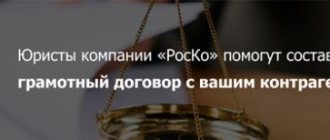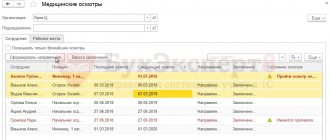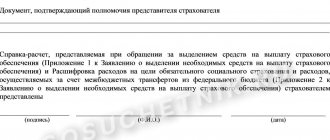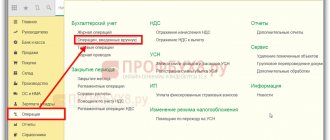What employer expenses are reimbursed by the Social Insurance Fund?
In 2022, employers continue to pay, with subsequent reimbursement from the fund:
- Part of the disability benefit financed by interbudgetary transfers from the federal budget;
- Average earnings for four additional days off per month to care for disabled children;
- Funeral benefit (or reimbursement of the cost of funeral services provided according to a guaranteed list by a specialized service);
- Funds for preventive measures to reduce industrial injuries and occupational diseases of workers.
We will not touch on the last type of expense in this article - you can read about it in the article “How to reimburse expenses for injury prevention from the Social Insurance Fund.” Next, we will talk about the first three types of reimbursable expenses.
Work with electronic sick leave according to the new rules in Externa
Limitations on Employee Reimbursement
By virtue of clause 2 of the Bank of Russia directive “On making cash payments” dated October 7, 2013 No. 3073-U, the organization’s revenue received in cash at the cash desk can only be spent on certain needs:
- social benefits and wages;
- payment of insurance compensation;
- for personal needs of individual entrepreneurs;
- payment for goods, works, services;
- issuance of money on account;
- issuing money for returned goods paid for in cash;
- payments by a bank payment agent.
Therefore, to reimburse expenses, employees should use another source of funds or specifically withdraw money from the account or transfer it to the employee’s bank card.
Plastic card fraud schemes and ways to combat them are described here.
The reimbursements that we are talking about in the article do not fall under the issuance of money on account, since, as stated earlier, money is issued after the fact. In addition, the clause “Payment for goods, works, services” also cannot be applied, since the money is not given to the supplier’s representative.
Let's also consider the issue of cash payment limits. According to clause 5 of Directive No. 3073-U, settlements between individuals and organizations can be made for any amount. Limit of 100 thousand rubles. Clause 6 of the same instructions is introduced for legal entities and individual entrepreneurs. However, when we talk about the interaction of an employee with a legal entity when purchasing something for the needs of the employer, the employee acts as a representative of his organization. It is not for nothing that we mention a power of attorney as a document that can help avoid disputes with tax authorities when accepting expenses for income tax purposes, as well as when deducting input VAT. Therefore, when making a purchase on behalf of an organization, the limit of 100 thousand rubles must also be observed.
For more information about how much money can be issued against a report, see this article.
Disability benefits through interbudgetary transfers
In most cases, sickness benefit consists of two parts:
- for the first 3 days it is paid by the employer from his own funds;
- all the following days are paid directly by the FSS from its budget.
But there is another source of financing - interbudgetary transfers from the federal budget. From these funds, additional expenses for the payment of part of the hospital benefits in an increased amount are reimbursed (Article 3 of the Federal Law of December 29, 2006 No. 255-FZ, Article 4 of the Federal Law of December 6, 2021 No. 393-FZ). Next, we will explain what is meant by these expenses and how to reimburse them.
Standard manual
The procedure for calculating sick leave benefits is defined in paragraph 1 of Art. 7 of Federal Law No. 255-FZ.
The standard benefit is 60%, 80% or 100% of average earnings for each day of illness. Exactly what percentage should be taken for calculation depends on the employee’s insurance experience. If, in terms of a full month, the benefit turns out to be below the minimum wage, it must be calculated based on the minimum wage.
Calculate disability benefits automatically and without errors
Increased benefit
Sometimes sickness benefits are calculated at a higher interest rate than is required based on the length of the insurance period. As a result, the payment amount is greater than the standard one. This procedure applies in the following cases:
- The employee is covered by benefits for “Chernobyl victims” (persons exposed to radiation as a result of accidents at the Chernobyl nuclear power plant and at the Mayak production association, nuclear tests at the Semipalatinsk test site, discharges of radioactive waste into the Techa River). A rate of 100% is applied (law of May 15, 1991 No. 1244-1 and others).
- Military or other service (in internal affairs bodies, fire service, etc.) during which the person was not insured is counted toward the length of service for calculating benefits. The rate is applied depending on the total length of service, that is, the non-insurance period is added to the insurance period (clause 4 of article 3, clause 1.1 of article 16 of Federal Law No. 255-FZ).
In these cases, there is an excess of the benefit amount over the standard one, that is, determined according to the rules of paragraph 1 of Art. 7 of Federal Law No. 255-FZ. It is this excess that constitutes the employer’s additional expenses for the payment of sick leave benefits and is financed from the federal budget. This difference (for the first 3 days of illness) must be reimbursed to the employer from the Social Insurance Fund.
Example. Smirnov’s average daily earnings for calculating sick leave benefits are 1,600 rubles, his insurance experience is 4.5 years. Previously, he completed military conscription for one year (completed in 2015). The period of military service must be taken into account when calculating sick leave.
Based purely on the insurance record, Smirnov would need to be paid for the first 3 days of illness: 1600 × 60% × 3 = 2,880 rubles. But taking into account the service, the employee’s length of service is 5.5 years, and the benefit is 80% of average earnings: 1600 × 80% × 3 = 3,840 rubles.
The difference in amount turns out to be: 3,840 − 2,880 = 960 rubles. These are the employer’s additional expenses for sick leave, which the FSS must reimburse him.
There is another case when sick leave is paid at an increased rate: caring for a sick child under 8 years of age. The benefit is calculated based on 100% of average earnings, regardless of length of service (clause 1, clause 3, article 7 of law No. 255-FZ). But the Social Insurance Fund pays it from the first day of sick leave, and not from the third, as usual. Therefore, the employer does not apply for compensation.
Documents for reimbursement
To receive compensation for additional expenses, you need to send the following documents to the territorial office of the Fund:
- application for compensation in the form from Appendix No. 5 to the FSS order No. 26 dated 02/04/2021;
- documents and information necessary for calculating sick leave benefits in the general case.
The deadline for referral is no later than five working days after receiving the employee’s application for payment of benefits. If the employer interacts with the Fund under the TKS, it sends electronic registers of documents. Otherwise, documents are submitted on paper with an inventory (Appendix No. 3 to the FSS order No. 26 dated 02/04/2021).
To check the legality and correctness of the accrual of hospital benefits in an increased amount, the Social Insurance Fund may request:
- information about the insured person;
- certificate of incapacity for work in paper form;
- documents on the basis of which the increased benefit was assigned, including confirmation of non-insurance periods;
- benefit calculation;
- personal account (payslips) of the employee;
- work book or employment contract;
- form STD-R or STD-PFR after January 1, 2022, if the employee switched to an electronic work book;
- documents confirming expenses for payment of benefits;
- salary certificate in form No. 182n.
Payment for additional days off to care for disabled children
The Labor Code guarantees the parent of a disabled child four additional days off every month. They can be used by the mother or father, or the parents can divide these days between themselves.
For each such day off, the employee must be paid average earnings. These funds are reimbursed to the employer by the Social Insurance Fund in the manner approved by Decree of the Government of the Russian Federation dated 08/09/2021 No. 1320.
To reimburse expenses incurred, the following documents must be submitted to the Social Insurance Fund:
- Application for compensation in the form from Appendix No. 10 to the FSS order No. 26 dated 02/04/2021. In 2022, a new application form should be introduced (the order has already been prepared and is going through the registration stage);
- A copy of the order to provide additional days off to care for disabled children, certified by the employer.
Resolution No. 1032 contains only a statement and an order. But to confirm the right to additional vacation days and the correct calculation of benefits, the Fund may request other documents:
- A copy of the disability certificate issued by the Bureau of Medical and Social Expertise;
- Documents confirming the place of residence of a disabled child;
- A copy of the birth certificate;
- A certificate from the second parent’s place of work stating that in the same month the employer did not provide him with preferential days off (or provided him partially);
- Documents that will confirm that the payment was made legally and in the correct amount: calculation of payment for additional days off;
- employee's personal account (payslips);
- work book or employment contract;
- if the work book is kept in electronic form - STD-R or STD-PFR for the period from 01/01/2020;
- documents confirming the fact of payment.
The Fund will consider the application within 10 working days from the date of receipt of the documents. If a positive decision is made, the money will be credited to the account no later than two business days from the date the fund makes the decision.
Funeral expenses
The state provides little financial support to a citizen who has taken on the responsibility of burying a deceased person (Federal Law No. 8-FZ of January 12, 1996). And in two cases this support is provided through the employer:
- if an employee died (on the day of death an employment contract was in force with him);
- if the employee’s minor family member has died.
Typically, assistance is provided to the relatives of the deceased, since they are the ones who take on funeral responsibilities. But the payment can also be made to another person - relationship does not play a role in this matter. The main thing is that the person took upon himself the responsibility to bury the deceased.
Assistance is provided in one of the ways the citizen chooses:
- in the form of a social benefit for burial (Article of the Federal Law of January 12, 1996 No. 8-FZ). The amount of the federal benefit in 2022 is 6964.68 rubles;
- in the form of a guaranteed list of funeral services - in the same amount as social benefits (Article of the Federal Law of January 12, 1996 No. 8-FZ).
Reimbursement of expenses for funeral benefits
The employer is obliged to pay benefits on the day of application. To do this, the citizen writes an application in free form, and also provides a copy of his passport and the original death certificate from the registry office.
To return the benefit amount through the Social Insurance Fund, you need to submit to the territorial body:
- application for reimbursement of expenses in the form from Appendix No. 9 to the order of the Social Insurance Fund dated 02/04/2021 No. 26.
- death certificate received from the person to whom the benefit was issued.
The Foundation may also check other documents:
- confirming payment of benefits;
- confirming the employment relationship - an employment contract, work book, form STD-R or STD-PFR, order of dismissal due to death.
- a copy of the death certificate.
Rent and utility reimbursement amounts for July were transferred on August 9, 2007.
Providing space for rent is the main activity. For the purpose of calculating profits, firms operate on the accrual basis.
It should be noted that in order to avoid disputes with the tax authorities, the landlord in the invoice issued to the tenant does not indicate in the text “Payment of utilities.
The following entries will be made in the lessor's accounting:
July 31, 2007:
Debit 20 Credit 60 – 54,000 rub. ((RUB 70,800 – RUB 10,800) – (RUB 7,080 – RUB 1,080) – reflects the cost of the landlord’s utility expenses;
Debit 19 Credit 60 – 9,720 rub. (RUB 10,800 – RUB 1,080) – reflects part of the VAT amount presented by utility services on the basis of invoices in relation to services consumed by the lessor;
Debit 68 Credit 19 – 9,720 rub. – the amount of VAT corresponding to the costs of utilities consumed by the lessor is accepted for deduction.
At the same time, in the purchase book, the company does not record all amounts for received invoices for utilities, but only the amounts consumed specifically by it, that is, 9,720 rubles.
Debit 60 Credit 51 – 70,800 rub. – payment for utilities has been made;
Debit 76 Credit 90-1 – 15,000 rub. (RUB 17,700 – RUB 2,700) – rent accrued for July 2007;
Debit 90-3 Credit 68-2 – 2,700 rubles. – VAT has been charged on the rental amount;
Debit 76 Credit 60 – 7,080 rub. – the tenant is presented with the amount of utility costs to be reimbursed.
August 9, 2007:
Debit 51 Credit 60 – 24,780 rub. (RUB 17,700 + RUB 7,080) – the amount of rent and compensation for utility costs was received from the tenant.
In tax accounting, as was said, rent can be accepted as income from the main activity with VAT charged on these amounts to the budget. The amount of utility payments compensated under the lease agreement is not accepted by it as income for the purpose of calculating profit. It is not subject to VAT, as it is not a sale.
Let's look at accounting as a lessee.
The company's accounting department will make the following entries:
July 31, 2007:
Debit 20 (25, 26, 44) Credit 76 – 15,000 rub. (RUB 17,700 – RUB 2,700) – rent for July 2007 is reflected;
Debit 19 Credit 76 – 2,700 rub. – the amount of VAT on rent is reflected in accordance with the agreement;
Debit 68 Credit 19 – 2,700 rub. – the amount of VAT on rent is accepted for deduction.
We remind you that the landlord issues an invoice to the tenant for the amount of compensation for utility bills without allocating the amount of VAT, as well as copies of utility bills. , the tenant, reflects the entire amount of the utility bill in expenses both in tax and accounting, without independently allocating VAT.
Debit 20 (25, 26, 44) Credit 76 – 7,080 rub. – reflects the cost of utility expenses subject to reimbursement to the lessor for July 2007.
August 9, 2007:
Debit 76 Credit 51 – 24,780 rub. (RUB 15,000 + RUB 2,700 + RUB 7,080) – the rent and the amount of reimbursed utilities are transferred to the lessor.
Compensation for the cost of a guaranteed list of services to a specialized service
Instead of benefits, a relative of the deceased can receive state-guaranteed burial services. In this case, an amount equal to the benefit will not be received by him, but by the specialized funeral service that provided these services. The employer in this scheme participates in the role of an intermediary. The order is:
- The funeral service submits to the deceased's employer an application for reimbursement of expenses (Appendix No. 11 to the FSS order No. 26 dated 02/04/2021), a death certificate from the registry office and an invoice for payment of the compensation amount;
- The employer sends them to the Social Insurance Fund within 2 working days from the date of receipt of the documents;
- The fund reviews the documents and makes a decision on compensation for funeral services no later than 5 working days. The FSS must transfer funds to the funeral service account within 2 business days.
The Fund can check whether the deceased (a relative of a deceased minor) and the employer actually had an employment relationship.
Reflection of registration of reimbursement of FSS expenses in the 1C program: Enterprise Accounting, ed. 3.0
In the 1C: Enterprise Accounting program, registration of funds received from the Social Insurance Fund is carried out by the document “Receipt to the current account” in the “Bank and cash desk” section.
Step 1. Go to the “Bank Statements” journal and click the “Receipt” button.
Step 2. Fill out the basic details of the document:
- Operation type – “Other receipt”;
- Settlement account – 69.01 “Settlements for social insurance”;
- Types of payments to the budget (funds)" - "Tax (contributions): accrued/paid";
- Post the document using the Post and Close button.
Step 3. As a result, the wiring will be generated: Dt 51 - Kt 69.01.
Reports are generated based on the data entered by the user into the program about the received amounts of reimbursement of expenses from the Social Insurance Fund.
How does the Social Insurance Fund reimburse expenses?
Reimbursement of expenses of any kind, with the exception of compensation to the funeral service for guaranteed services, is made according to the following scheme:
- The employer sends documents to the Social Insurance Fund;
- The Fund reviews them and makes a decision within no more than 10 working days from the date of receipt;
- If a decision on compensation is made, the Social Insurance Fund transfers the funds to the employer’s current account within no more than two working days from the date of the decision.
Note! The Fund is changing some of the documents used to reimburse policyholders. The corresponding Order is being registered with the Ministry of Justice. Among other things, the application for payment of additional days off to care for disabled children will change. The new form should come into force in 2022.
The new order does not provide for updating applications for reimbursement of disability benefits from the federal budget and for funeral expenses, as well as for reimbursement of the cost of guaranteed services of a funeral organization. It is likely that, as before, the forms approved by Order No. 26 will be used. But it cannot be ruled out that the FSS will approve their new forms separately.
Representative expenses
The costs of attorneys and other representatives is a topic that should be discussed separately. They, like other expenses, are compensated by the losing side.
It is noteworthy that their sizes often exceed all other figures indicated in the claims. Quite often, the party who is responsible for the costs of the lawsuit tries to do everything possible to reduce the amount of these payments or avoid them altogether.
Often, the representative of a party in the proceedings is a person who did not have the right to provide such services for payment. Therefore, it is possible to avoid payments for this cost item.
The costs of a representative in a lawsuit add up in the same way as the costs of engaging a specialist or expert. That is, this is payment for transport, services, accommodation, if the lawyer arrived from somewhere, and so on.
Sometimes they try to add expenses to this list that are not directly related to the work of the representative in court, and in such a situation, the losing party has the right to file a petition to have them excluded from the list of legal expenses. For example, it will not be possible to recover expenses for a representative if:
- the representative and the winning party are relatives;
- the representative of the plaintiff or defendant is an employee of his company;
- the representative of the losing party does not have a legal background;
- the company representing the interests of the losing party does not have the right to provide legal services and does not provide them, according to the charter.
You can also exclude from the list of compensable expenses the transportation costs of a lawyer, if it is not possible to document the purpose of the trip, and the pre-trial services of a lawyer.
Accommodation costs can also be disputed. The situation with them is the same as with spending on transport. First, you need to prove that these expenses were directly related to the work of the representative. Secondly, if compensation for such costs was not provided for in the agreement between the plaintiff/defendant and the representative, it is impermissible to demand their coverage.
There are situations where it is easy to challenge costs awarded to compensate the losing party. For example, if the paperwork was carried out incorrectly.
This can be observed in the fragmentation of documentation, when instead of one claim two or three are drawn up, and several petitions are filed.
Another example is a situation where a lawyer receives payment for meetings that were disrupted because he filed a motion. It may also happen that the documents submitted by the lawyer were rejected by the judge, but are included in the list of costs that must be reimbursed. Violation of the terms of the contract by the plaintiff's representative is also an example of incorrect paperwork.
Violations of contract terms by a lawyer should be discussed separately. He can, for example, simply attend a meeting without particularly participating in it.
In this case, these meetings will be taken into account in his fee. In such a situation, most likely, his agreement with the party whose interests he represents contains clauses according to which he must do everything to ensure the success of the proceedings.
And if the lawyer is not very actively involved in the process, but his side wins, then the losing side can point this out when compensating for costs.








